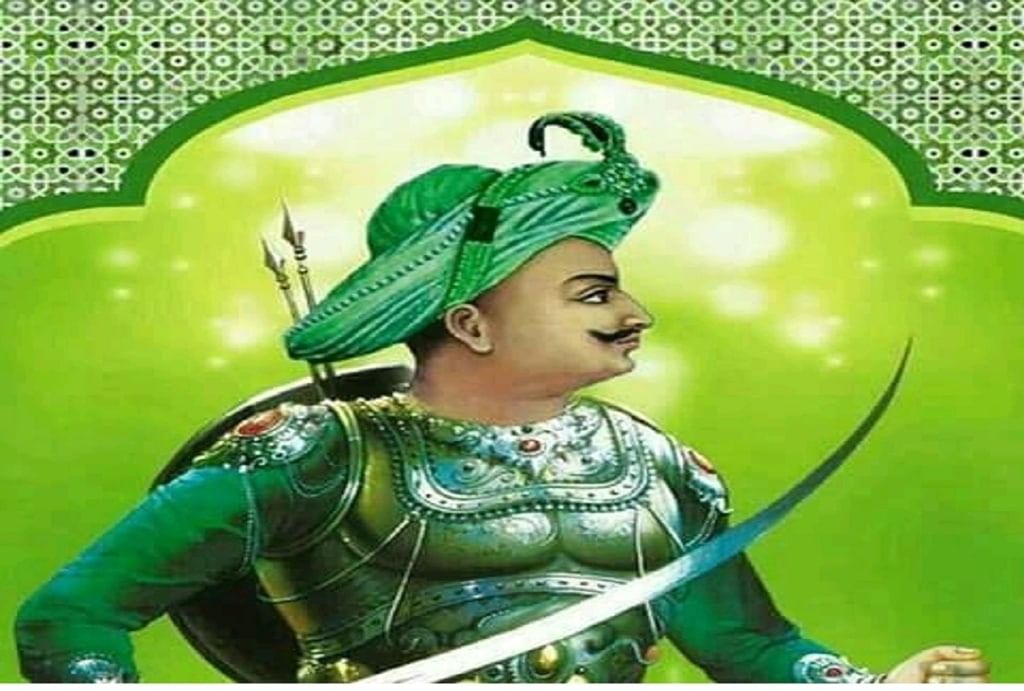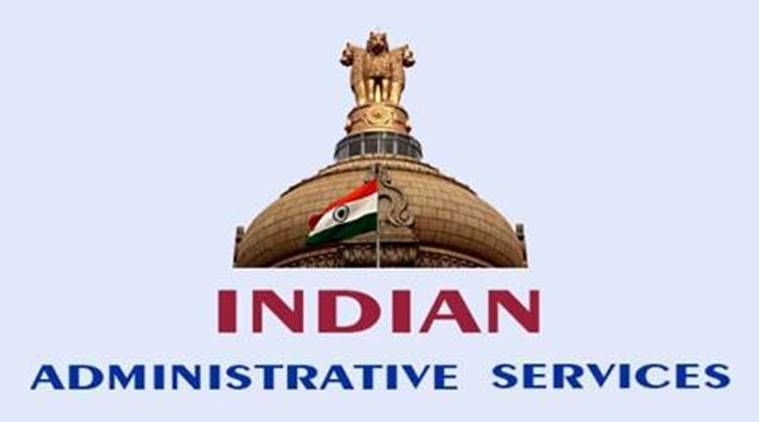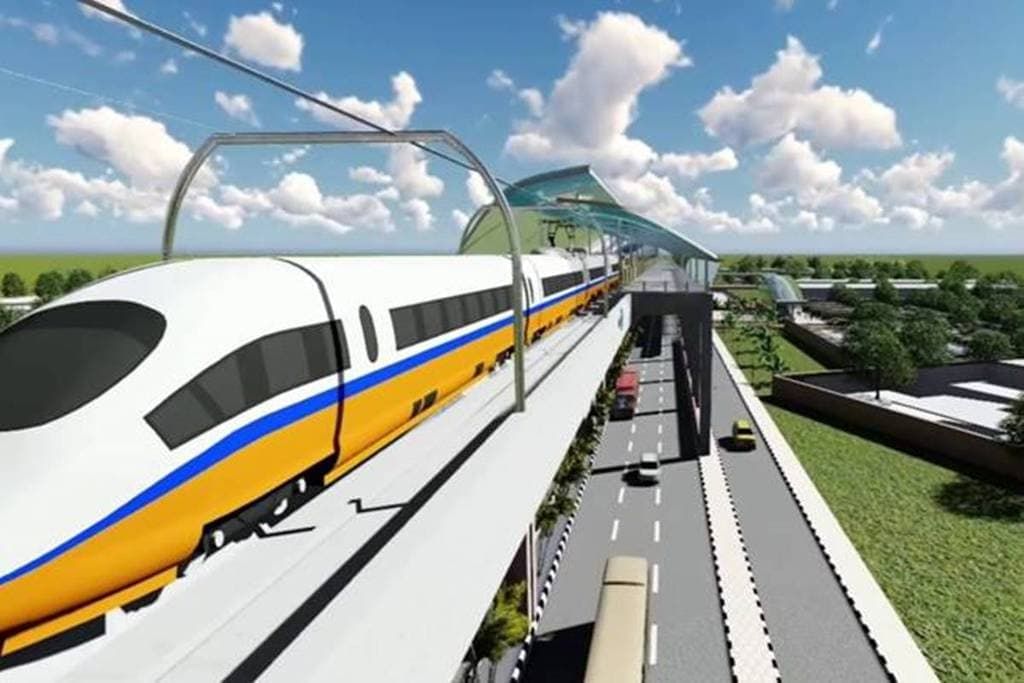UPSC Daily Current Affairs- January 28, 2022 | Current Affairs: Daily, Weekly & Monthly - CLAT PDF Download
GS-I
Unusually Colder and Wetter Winter

Context
In India, especially in North India, the winter of 2021-22 has been unusually cold and unusually long. The days, in particular, have felt colder and chillier than normal.
About Colder
Since December 2021, maximum temperatures across the North, Northwest and Central India regions have persistently remained below normal, resulting in “cold day” conditions. Technically, this means more than just a day that is cold.
- A cold day is one in which the maximum temperature falls below 16 degrees Celsius, a phenomenon that is commonly seen during the winter months in the northern plains of India.
About Wetter
- Light to moderate intensity rainfall is also commonly seen during winters in neighbouring regions of North India.
- This January, however, has seen widespread rain across the central, northwestern, northern, eastern, and northeastern regions of India.
- As many as 24 states or Union Territories have recorded rainfall varying from excess to large excess this month.
About Less Fog than Normal
- December and January are known for the formation of dense fog across North India.
- In January 2022, the national capital remained affected by fog for 252 hours against a normal of 292 hours.
- IMD officials said the ongoing winter has recorded the lowest fog hours since 1991-92 over Delhi.
Causes of Western Disturbances
Until 25th January 2022, seven western disturbances had passed over India — nearly all of them strong enough to cause widespread rain, snowfall, and turbulent weather across large geographical areas between Pakistan and Northeast India.
- These systems caused hailstorms in northern Maharashtra, and heavy rainfall in Tamil Nadu.
Causes of La Niña
- Frequent and higher numbers of western disturbances are associated with La Niña.
- At present, moderate intensity La Niña conditions — which manifests itself as cooler than normal sea surface temperatures in the equatorial Pacific Ocean — are prevailing.
Causes of Cold Winds from Far North
After a western disturbance crosses India, cold winds from the far north of the country penetrate to lower latitudes, and can reach up to even Telangana and Maharashtra, leading to colder weather, and sometimes to cold wave conditions.
Causes of Low-lying Clouds and Moisture
- The presence of low-lying clouds and the availability of moisture along the Indo-Gangetic plains made it favorable for cold day conditions and the additional chill factor experienced during the day time.
- This was the longest and most intense spell of the season so far.
Tipu Sultan

Context
Recently, naming a playground on Tipu Sultan in Mumbai sparked a controversy.
Brief Profile
- Born in November 1750, Tipu Sultan was Haidar Ali’s son and a great warrior, also known as the Tiger of Mysore.
- He was a well educated man fluent in Arabic, Persian, Kanarese and Urdu.
- Mysore had grown in strength under the leadership of powerful rulers like Haidar Ali (ruled from 1761 to 1782) and his famous son Tipu Sultan (ruled from 1782 to 1799).
- Tipu introduced a number of administrative innovations during his rule, including his coinage, a new Mauludi lunisolar calendar, and a new land revenue system which initiated the growth of Mysore silk industry.
- Embracing western military methods like artillery and rockets alongside traditional Indian weapons including war elephants, he ensured his forces could overwhelm his Indian rivals and match the British armies sent against him.
Maintenance of Armed Forces
- He organised his army on the European model with Persian words of command.
- Though he took the help of the French officers to train his soldiers, he never allowed them (French) to develop into a pressure group.
- He was well aware of the importance of a naval force.
- In 1796, he set up a Board of Admiralty and planned for a fleet of 22 battleships and 20 large frigates.
- He established three dockyards at Mangalore, Wajedabad and Molidabad. However, his plans did not fructify.
Fought Against Marathas
In 1767, Tipu commanded a corps of cavalry against the Marathas in the Carnatic (Karnataka) region of western India, and he fought against the Marathas on several occasions between 1775 and 1779.
Role in Anglo-Mysore Wars
- The British saw Haidar and Tipu as ambitious, arrogant and dangerous – rulers who had to be controlled and crushed.
- Four wars were fought with Mysore.
- 1767-69: Treaty of Madras.
- 1780-84: Treaty of Mangalore.
- 1790-92: Treaty of Seringapatam.
- 1799: Subsidiary Alliance.
- Only in the last – the Battle of Seringapatam – did the Company ultimately win a victory. Tipu Sultan was killed defending his capital Seringapatam.
- Mysore was placed under the former ruling dynasty of the Wodeyars and a subsidiary alliance was imposed on the state.
Other Related Points
- He was also a patron of science and technology and is credited as the ‘pioneer of rocket technology’ in India.
- He wrote a military manual (Fathul Mujahidin) explaining the operation of rockets.
- Tipu was a great lover of democracy and a great diplomat who gave his support to the French soldiers at Seringapatam in setting up a Jacobin Club in 1797.
- Tipu himself became a member of the Jacobin Club and allowed himself to be called Citizen Tipu.
- He planted the Tree of Liberty at Seringapatam.
GS-II
What is America COMPETES Act?

Context
The US has unveiled the Creating Opportunities for Manufacturing, Pre-Eminence in Technology, and Economic Strength (COMPETES) Act of 2022 that proposes to open up new vistas for talented individuals from across the world with a new start-up visa.
About COMPETES Act
- The bill provides $52 billion to encourage more semiconductor production in the US, and $45 billion for grants and loans to improve supply chain resilience and manufacturing, among other programs.
- It also includes funding to address social and economic inequality, climate change, and immigration.
- For instance, it provides an exemption for STEM PhDs from the green card cap and creates a new green card for entrepreneurs.
- The bill also authorizes $600 million a year to construct manufacturing facilities to make the US less reliant on solar components made in Xinjiang, China.
Key provisions in the Act
- The Act amends the Immigration and Nationality Act to create a new classification of “W” non-immigrants for entrepreneurs with an ownership interest in a start-up entity.
- It seeks to establish procedures for foreign nationals with an ownership interest in a start-up entity to self-petition for lawful permanent resident status as an immigrant entrepreneur.
- The bill exempts from the numerical limits on immigrant visas certain foreign nationals (and the spouses and children of such aliens) who have earned a doctoral degree in STEM.
Implications for Indians
- It would mean more opportunities in the US for Indian talent, and for skilled workers.
- Every year, the US administration issues 85,000 H-1B work permits.
- Every year, Indians and Indian companies corner a lion’s share of the H-1B work permits issued that year.
- With this new category, Indian professionals will likely have a better shot at opportunities that the Act is likely to provide.
Finding a way to share IAS officers

Context
There are recent reports in the media about serious concerns of several state governments on Government of India’s proposed move to amend the IAS service rules to meet the shortage of officers at various levels at the Centre.
How does central deputation work?
- Voluntary: Under the current dispensation, officers opt for central deputation from the states voluntarily.
- The Centre then makes a selection from among these officers for posts which are vacant or are likely to be vacant in the near future.
- While doing so, it considers the suitability of the officer based on his/her past experience.
- Once the selection is finalised, orders are issued, requesting the state government to relieve the officer concerned.
- Quota for each state: Each state has a certain quota beyond which its officers are not accepted by the Centre.
Shortage of officers on central deputation
- In the last decade, there has been a gradual decline in the number of officers who opt for central deputation.
- Generally, of the total cadre strength of the states, about 25-30 per cent used to be on central deputation.
- Currently, less than 10 per cent are working in various central ministries.
- According to certain reports, in states like UP, Bihar, Odisha and Tamil Nadu and Kerala, the number is between 8 per cent and 15 per cent.
- One of the reasons for this non-availability of officers for central deputation is the inadequate recruitment more than a decade and half ago.
- But an important reason is also the comparatively better service conditions in the states.
So, what do the proposed rules seek to achieve?
- While fixing the cadre strength of states, about 40 per cent posts of senior duty are earmarked for central deputation.
- Shortage to be shared equitably: Considering that recruitments in the past were not adequate, the proposed change in rules provides for shortage to be shared equitably between the Centre and states.
- Time limit to relieve officers: Also, since vacancies need to be filled in time, there is a suggestion of a time limit in which states must respond and relieve the officer selected.
Conclusion
Proposed amendment to service rules is needed to meet shortage of personnel, but Centre must dispel states’ fears about overreach.
Regional Rapid Transit System (RRTS)

Context
Recently, the officials of Regional Rapid Transit System (RRTS) estimated that RRTS will reduce CO2 emissions by taking around 1.5 lakh private vehicles off the road.
- The corridor will start from Sarai Kale Khan in Delhi, pass through Ghaziabad, and reach Modipuram in Meerut (Uttar Pradesh).
- The RRTS, the first of its kind in the national capital, will run at a speed of 100 km per hour and commuters will reach Meerut in 50-60 minutes.
About RRTS
- RRTS is a new, dedicated, high speed, high capacity, comfortable commuter service connecting regional nodes in NCR.
- RRTS is different from conventional Railway as it will provide reliable, high frequency, point to point regional travel at high speed along dedicated path way.
- RRTS is different from metro as it caters to passengers looking to travel a relatively longer distance with fewer stops and at higher speed.
Intended Benefits
- Environment Friendly: The corridor is estimated to reduce 2.5 lakh CO2 tonnes/year of total annual greenhouse gas emissions, making the city a cleaner and a much better place to live.
- Economic Development: It is estimated to increase the share of public transportation usage along the corridor from 37% to 63%.
- High-speed connectivity will result in balanced economic development across the region, leading to economic benefits to all strata of society and many nodes of development rather than all economic activity happening at one place.
- Sustainable Urbanization: The project will serve as a demonstration for developing high-capacity rapid urban transit corridors in other urban areas of India.
- It will help in reducing traffic congestion and total emissions from the transport sector in NCR.
GS-III
Bangladesh top Destination for Indian Pomegranates

Context
Bangladesh has emerged as the top destination for exported Indian pomegranates over the last few years.
- Last fiscal (2020-21), India had exported 68,502.9 tonnes of the fruit, of which 36,906.77 tonnes (more than 50%) had gone to Bangladesh.
About Bangladesh top Destination for Indian Pomegranates
- Pomegranate (Punica granatum) is grown in tropical and subtropical regions of the world.
- It grows well under semi-arid conditions and can be grown upto an altitude of 500 m. above mean sea level. It thrives well under hot, dry summer and cold winters provided irrigation facilities are available.
- Grown mostly in Maharashtra, Karnataka and Gujarat, pomegranate has emerged as a major export crop for drought-prone areas of the state.
- Over the years, Indian exports have become stagnant at around 50,000-60,000 tonnes as concerns over the quality of the fruit eclipsed the growth potential.
- While the European Union is a major market where the fruit fetches premium prices, the standards governing quality are higher there.
- Non-availability of export-ready fruit has, over the years, seen European markets slipping slowly out of Indian exporters’ hands.
Reasons for Export Growth in Bangladesh
- Ease of transportation and relatively relaxed import norms have helped Indian growers take their fruit to Bangladesh even as the share of export to European countries has dropped.
- The fruit can be exported to Bangladesh round the year and thus the produce can be sent even when the European season is over.
Urgent need to check Bank Frauds

Context
India saw more banking frauds in the first half of 2021-22 than in the same year-ago period.
About Banking Sector Frauds in India
- Banking fraud is an attempt to siphon or take funds or other assets from a financial or banking institution.
- This may vary from data theft, cybercrime, and simple manipulation of books of accounts, to fraudulent documentation.
- They can be classified under various categories such as:
- Criminal breach of trust and misappropriation of funds
- Encashment done fraudulently through forged instruments
- Manipulation of books of accounts
- Irregularities in foreign exchange transactions
- Unauthorized credit facilities extended for illegal gratification, cheating and forgery
- Negligence and cash shortages
Scale of the frauds
- Banking fraud cases rose to 4,071 in April–September FY22 from 3,499 in the year-ago period, according to the RBI’s Trend and Progress of Banking in India, 2020-21, report.
- The amount involved in the frauds declined from ₹64,621 crore to ₹36,342 crore, according to the RBI’s Trend and Progress of Banking in India report.
Reasons for such fraud
- Rise in frauds is because of remote working models, customers increasingly using non-branch banking channels, and limited use of forensic tools.
- Banks are unable to consistently monitor loans given to small and medium businesses.
- Retail banking is a major contributor to fraud occurrences.
What is the impact of rising frauds?
- Frauds erode customer confidence and pose challenges for the financial system in terms of reputational risk, operational risk, and business risk.
- Loans granted rightly belong to depositors, irrespective of norms or vested interests.
- It can lead to the collapse of banks or weaken their balance sheets, resulting in bad banks having to be merged with stronger banks.
- Productive activities would be deprived of credit support, which is the backbone of any business.
India’s economy and the challenge of informality

Context
Despite efforts by the government, formalisation of economy still eludes us.
Prevalence of informality in India
- Despite witnessing rapid economic growth over the last two decades, 90% of workers in India have remained informally employed, producing about half of GDP.
- Combining the International Labour Organization’s widely agreed upon template of definitions with India’s official definition (of formal jobs as those providing at least one social security benefit — such as EPF), the share of formal workers in India stood at 9.7% (47.5 million).
- The prevalence of informal employment is also widespread in the non-agriculture sector.
- About half of informal workers are engaged in non-agriculture sectors which spread across urban and rural areas.
- Industries thriving without paying taxes are only the tip of the informal sector’s iceberg.
- What remains hidden are the large swathes of low productivity informal establishments working as household and self-employment units which represent “petty production”.
- To conflate the two distinct segments of the informal sector would be a serious conceptual error.
Fiscal perspective of formalisation
- Efforts to encourage formalisation: Currency demonetisation, introduction of the Goods and Services Tax (GST), digitalisation of financial transactions and enrolment of informal sector workers on numerous government Internet portals are all meant to encourage the formalisation of the economy.
- The formal sector is more productive than the informal sector, and formal workers have access to social security benefits.
- The above-mentioned efforts are based on the “fiscal perspective” of formalisation.
- This perspective appears to draw from a strand of thought advanced by some international financial institutions such as the International Monetary Fund, which foregrounds the persistence of the informal sector to excessive state regulation of enterprises and labour which drives genuine economic activity outside the regulatory ambit.
- Hence, it is believed that simplifying registration processes, easing rules for business conduct, and lowering the standards of protection of formal sector workers will bring informal enterprises and their workers into the fold of formality.
Issues with fiscal perspective
- Early on, in an attempt to promote employment, India protected small enterprises engaged in labour-intensive manufacturing by providing them with fiscal concessions and regulating large-scale industry by licensing.
- Such measures led to many labour-intensive industries getting diffused into the informal/unorganised sectors.
- Further, they led to the formation of dense output and labour market inter-linkages between the informal and formal sectors via sub-contracting and outsourcing arrangements (quite like in labour abundant Asian economies).
- While such policy initiatives may have encouraged employment, bringing the enterprises which benefited from the policy into the tax net has been a challenge.
- Political and economic reasons operating at the regional/local level in a competitive electoral democracy are responsible for this phenomenon, too.
Role of underdevelopment
- Global evidence suggests that the view that legal and regulatory hurdles alone are mainly responsible for holding back formalisation does not hold much water.
- A well-regarded study, ‘Informality and Development’ argues that the persistence of informality is, in fact, a sign of underdevelopment.
- The finding suggests that informality decreases with economic growth, albeit slowly.
- A similar association is also evident across major States in India, based on official PLFS data.
- Hence, the persistence of a high share of informal employment in total employment seems nothing but a lack of adequate growth or continuation of underdevelopment.
Impact of pandemic
- Research by the State Bank of India recently reported the economy formalised rapidly during the pandemic year of 2020-21, with the informal sector’s GDP share shrinking to less than 20%, from about 50% a few years ago — close to the figure for developed countries.
- These findings of a sharp contraction of the informal sector during the pandemic year (2020-21) do not represent a sustained structural transformation.
- They are a temporary (and unfortunate) outcome of the pandemic and severe lockdowns imposed in 2020 and 2021.
Conclusion
Policy efforts to formalise the economy will have limited results as the bulk of informal units are petty producers.
|
839 docs|610 tests
|
FAQs on UPSC Daily Current Affairs- January 28, 2022 - Current Affairs: Daily, Weekly & Monthly - CLAT
| 1. What is the significance of GS-I, GS-II, and GS-III in UPSC? |  |
| 2. What is the role of UPSC in conducting the exam? |  |
| 3. How can daily current affairs help in UPSC preparation? |  |
| 4. What are Frequently Asked Questions (FAQs) and why are they important for UPSC preparation? |  |
| 5. How can one effectively search for relevant information related to UPSC on Google? |  |

|
Explore Courses for CLAT exam
|

|

















